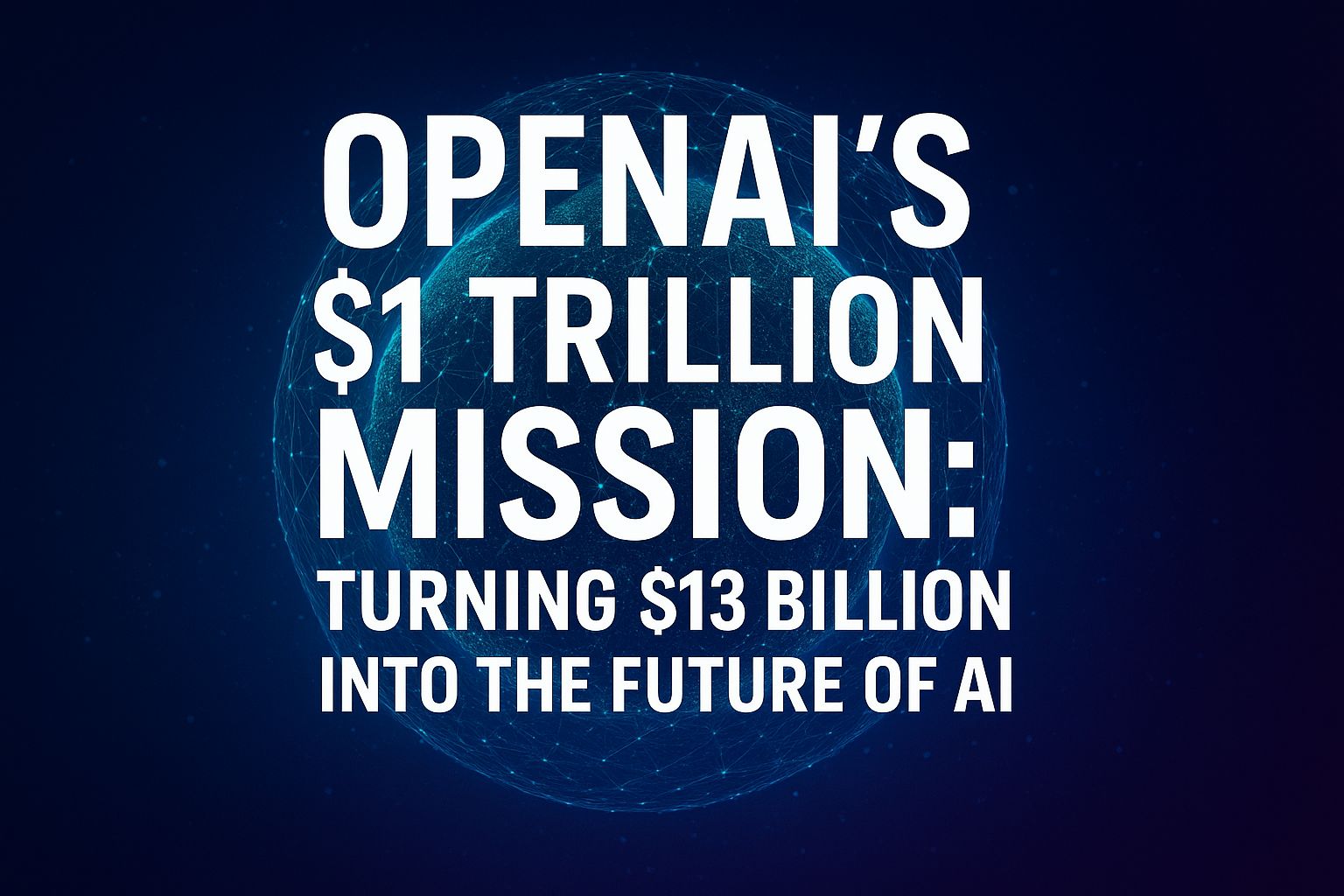OpenAI is standing at a crossroads between innovation and immense ambition. The company that redefined how the world interacts with artificial intelligence is now planning an audacious leap — transforming $13 billion in annual revenue into a $1 trillion investment over the next decade.
💰 Explosive Revenue, Modest Conversion
According to the Financial Times, OpenAI currently brings in an estimated $13 billion each year, an extraordinary figure for a company that only became a household name in 2023.
Much of that success comes from ChatGPT, its world-famous AI chatbot, which now boasts 800 million regular users. Yet, only 5% of them — roughly 40 million people — pay $20 per month for ChatGPT Plus, contributing to nearly 70% of OpenAI’s total revenue.
That’s a testament to the global obsession with AI — and the powerful business model built around premium AI access.
⚙️ A $1 Trillion Vision
Revenue, however, is only one piece of the puzzle. OpenAI’s future depends on massive infrastructure spending. Reports suggest the company has committed to more than $1 trillion in expenses across the next ten years — funding the next generation of AI hardware, data centers, and neural computing power.
To date, OpenAI has locked in over 26 gigawatts of computing capacity, partnering with tech giants like Oracle, Nvidia, AMD, and Broadcom. These alliances will power OpenAI’s ever-growing AI ecosystem, but they come at staggering cost — far outpacing its current income.
How to pick the right global payroll mode
Find your fit: Deel’s free guide breaks down 3 global payroll models with key benefits and tradeoffs for HR and finance teams.
🧭 The 5-Year Expansion Blueprint
To bridge the gap between revenue and ambition, OpenAI is reportedly crafting a five-year diversification plan. This roadmap explores new markets, products, and revenue streams beyond chat-based AI tools. Key initiatives include:
🔹 Government & Enterprise Contracts: Expanding into defense, research, and national infrastructure partnerships.
🔹 E-commerce AI Tools: Building advanced shopping and recommendation engines.
🔹 AI-Generated Video Services: Venturing into synthetic media, entertainment, and education content.
🔹 Consumer Hardware: Exploring dedicated AI devices that integrate OpenAI’s models directly into everyday products.
🔹 Project Stargate: A monumental data center initiative aimed at transforming OpenAI into a global AI compute supplier for businesses and developers.
🌐 Why This Matters to the Global Market
OpenAI’s influence now stretches far beyond Silicon Valley. The company’s technology supports workflows, content, and decision-making for many of America’s largest corporations.
If OpenAI succeeds, it could redefine how enterprises consume computing power — effectively becoming the “Intel + Microsoft + AWS” of the AI era.
If it stumbles, though, the consequences could echo across tech and financial markets alike.
Analysts note that OpenAI’s trajectory mirrors that of early cloud pioneers but at an unprecedented scale and speed. The difference: this time, the infrastructure itself is as valuable as the intelligence it produces.
🚀 A Bold Gamble on the Future
The stakes are enormous, but so is the potential payoff. OpenAI’s trillion-dollar gamble represents the largest private investment in artificial intelligence infrastructure in history.
Stay updated with the latest insights—subscribe to our newsletter for real-time market analysis!



